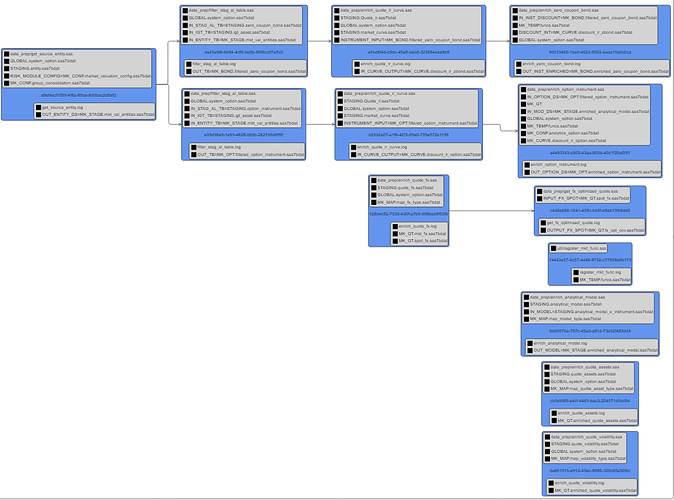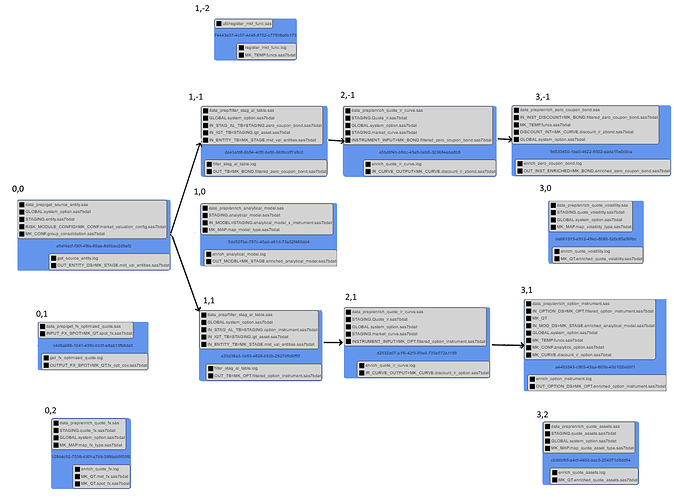I have a certain layout style that I’m looking for, but before I go down a bunch of rabbit holes I was hoping you could point me to the most straightforward way to go about it.
Basically I want what is essentially a combination of the layeredDiagraphLayout’s standard behavior, but with a swimlane/band style grid layout.
I have a set of normalized coordinate data like this:
“one”: [0,0],
“two”: [1,1],
“three”: [0,1],
“four”: [0,2],
etc
and then a set of link data:
“one”: [“two”,“three”],
“two”:[“four”],
“three”:[“four”],
“four”:null,
etc
Basically I want the layeredDiagraph’s look, linking, resizing, but the ability to “snap” all of the nodes to a grid, so that all the horizontal nodes line up in groups I specify, arbitrarily. Some may be floating off on their own, and I may “space” the linked groups so they go in different spots if I put them there.
I’ve been tinkering around with the BandedTreeLayout, the GenogramLayout and the Swimlane. I’m hoping to avoid using groups to do this, as they are being used for another logical, nested arrangement in the diagram. I could “weave” the banding groups between them, but that seems like it could get complicated quickly.
Using a normal LayeredDiagraph this is what I have at the moment:
This is what I’d like (please excuse the awful paint image):
I’m just not sure if I should be going down the route of a custom grid layout where I use row and column values to space things (like the tableLayout extension), then adding link behavior on top of that, or trying to use a custom layeredDiagraph that I implement snapping behavior.

